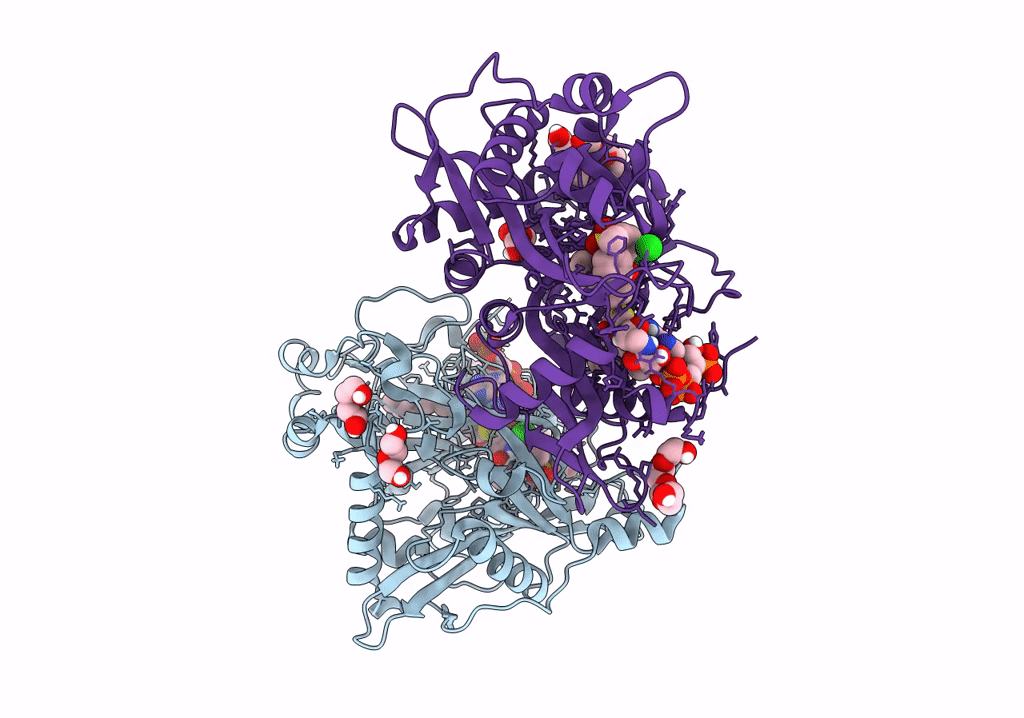
Deposition Date
2022-11-29
Release Date
2023-05-31
Last Version Date
2024-09-04
Entry Detail
PDB ID:
8FBM
Keywords:
Title:
Crystal structure of Cryptosporidium parvum N-myristoyltransferase with bound myristoyl-CoA and inhibitor 1
Biological Source:
Source Organism:
Cryptosporidium parvum (Taxon ID: 353152)
Host Organism:
Method Details:
Experimental Method:
Resolution:
1.90 Å
R-Value Free:
0.18
R-Value Work:
0.14
R-Value Observed:
0.14
Space Group:
P 1 21 1


